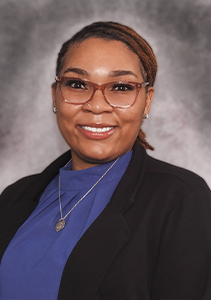Sześć godzin to wąski przedział czasowy, w którym ofiary udaru musiały otrzymać leczenie ratujące życie, gdy tylko pojawiły się pierwsze objawy. Ale nowy wytyczne z American Heart Association i American Stroke Association sugerują, że okno czasowe można wydłużyć nawet do 24 godzin po wystąpieniu objawów.
“The number one message we want to get out is that time absolutely matters if you’ve had a stroke. The faster someone can get to a hospital the better our chances are to reduce potential brain damage,” Dr. Lakshmi Warrior, Associate Medical Director of Stroke at Cook County Health (CCH) stressed. “So you should call 911 immediately as soon as you recognize any of the warning signs of stroke.”
To powiedziawszy, dr Warrior powiedział, że nowe wytyczne, oparte na niedawno opublikowanych badaniach, są bardzo zachęcające dla ofiar udaru mózgu.
“It suggests we have more options for preventing brain damage beyond that narrow window,” Dr. Warrior said. “And while not every stroke patient may be a candidate for those interventions, it still gives doctors more options than we used to have to save lives. But none of that matters if someone having a stroke doesn’t call 911 immediately, so that’s still the number one priority for people.”
An ischemic stroke—which accounts for the majority of strokes—happens when blood vessels to the brain become blocked or narrowed by a clot, cutting off blood flow to the brain. If this blood flow is not restored, it may lead to permanent damage to the brain.
The time from symptom onset to presentation is very important when considering what treatments can be used. Tissue plasminogen activator (tPA), also known as the clot busting drug, must be given within four and a half hours of the onset of stroke. In patients with severe stroke symptoms found to have a blood clot in one of the large blood vessels of the brain, the clot can be physically removed if the patient can be treated within 6 hours of onset of symptoms. The physical removal of a clot is called an endovascular procedure or a mechanical thrombectomy.
“In a breakthrough for stroke patients, two trials (DAWN and DEFUSE 3) have shown a clear benefit to extending the window for using mechanical thrombectomy for certain patients to up to 16-24 hours,” said Dr. Warrior, who added that CCH follows the new guidelines. “This gives us hope to be able to treat more patients with stroke symptoms than ever before.”

May is Stroke Awareness Month. Do you know the warning signs for a stroke?
WedługCentra Kontroli i Zapobiegania Chorobom, objawy udaru mogą obejmować:
- Nagłydrętwienielub osłabienie twarzy, ramienia lub nogi, szczególnie po jednej stronie ciała.
- Nagłydezorientacja, problemy z mówieniem lub trudności ze zrozumieniem mowy.
- Nagłykłopoty z widzeniemw jednym lub obu oczach.
- Nagłykłopoty z chodzeniem, zawroty głowy, utrata równowagi lub brak koordynacji.
- Nagłysilny ból głowybez znanej przyczyny.
On average, a stroke patients loses 1.9 million brain cells every minute a stroke goes untreated. So if you have signs or symptoms of stroke, call 911 immediately. Remember, time is brain.


